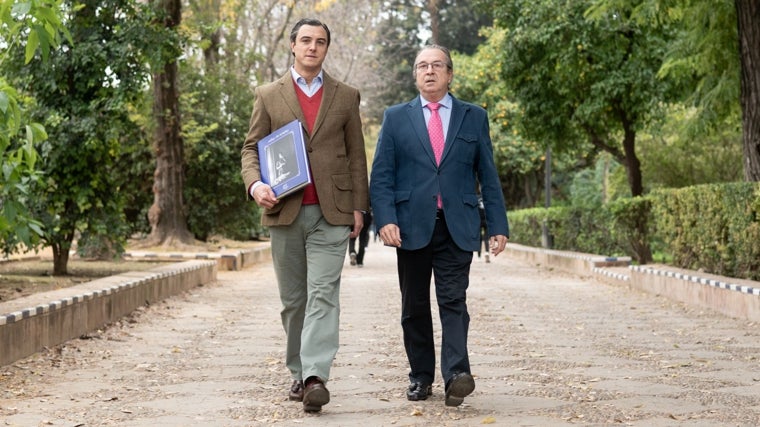with you, Agustín and Joaquín. Masters of bullfighting photography whose first names remain a mystery to many of their supporters. It happens with Antonio and Rafael, components of ‘Those of the River‘, and with José Víctor and José Luis, the couturiers Victorio and Lucchino. We already told about these designers how they approached to greet and congratulate Morante on the Maestranza tail: «Good afternoon, teacher. I don’t know if you know me, but…” “Of course I know him, but I don’t know if you are Victorio or Lucchino,” the genius responded. Something like this continues to happen with the protagonists of this bullfighting page, whom everyone has perfectly identified under a signature (Arjona) of which are its last links. The fourth generation of a saga that through a viewer has known find, capture and capture, like few others, the art of bullfighting.
During this last season they have stepped on almost as many alleys as carpets, on which they have promoted ‘Rosemary aroma‘, a compilation of the best images of the Pharaoh of Camas since his debut as a calf in the extinct little square of the Kerchief in 1954 – it was enough for the illustrious Pepe Arjona (father of Agustín and grandfather of Joaquín) received news of a little boy who was a good bullfighter at the Camas soccer field so that he would go and meet him – until his retirement in 2000. They are more than 150 photographsmany of them unpublished, which show an intimate Curro Romero in a hotel room, celebrating among his people or posing as a model before the legendary Flautino by Gabriel Rojas. This last photograph is of Agustín, who continues to recount in great detail that task of which he immortalized an iconic rudeness so that Sebastián Santos could mold a monument to the Fine Arts.
Curro Romero’s stand before the Flautino bull, an image that served as a model for the sculptor Sebastián Santos for his monument
Of ‘Aroma de Rosemary’ only a few copies remain after a «complete success» wherever they have taken it, especially in Mexico. «The genesis was that Curro is a bullfighter who has not looked like anyone, and to whom no one has appeared. Many things have been done about it, although nothing related to this concept of Art. It is a reflection of the reinvention of the Arjona family, who, far from becoming stagnant in the face of new times, innovated. “Formerly [los toreros] They asked you to ‘make me as many copies’ of these photographs. And from a debut in Seville they bought you everything. They took those photographs to the newspapers for interviews and placed them in restaurants or businesses,” says Agustín, who illustrates his example with the cloudy walls of the Venta Pazo. Today they work directly for companies –among others, to Pagés and Lances de Futuro–, so that the graphic material can be used by the media. Everything has changed. And, in some cases, they accompany bullfighters. «We have gone with Castella, Manzanares, Emilio de Justo and, for many years, fixed with Diego Ventura». They will soon recover their bullfighting yearbook (after the pandemic it is released biennially), framed within this same editorial project.

Joaquín and Joaquín Arjona walk through the Murillo Gardens with a copy of ‘Aroma de Romero’
Although the dynasty reaches 110 years of bullfighting photographs – Agustín González Arjona, recognized portraitist of 20th century Sevillehe even photographed Juan Belmonte in the Maestranza and Joselito in the Monumental–, the recognition of the firm was not achieved until the second half of the last century with the remembered Pepe Arjona. His son Agustín, who recognizes that in his case “the love of bullfighting is ahead of photography», he debuted immortalizing a cover of ABC of Seville. It was on Tuesday, August 28, 1979 when he took the images of that ‘Bloody afternoon at the Maestranza‘. Almost half a century in which Agustín (like now Joaquín), in addition to the “bloody”, has praised the artistic. That’s what this book is about, like its signature: Art.
Postscript: Agustín is on the left of the image and Joaquín is on the right. With you, the Arjona.
#Aroma #Curro #Romero #great #photographic #legacy #Pharaoh #Camas #Arjona #firm

